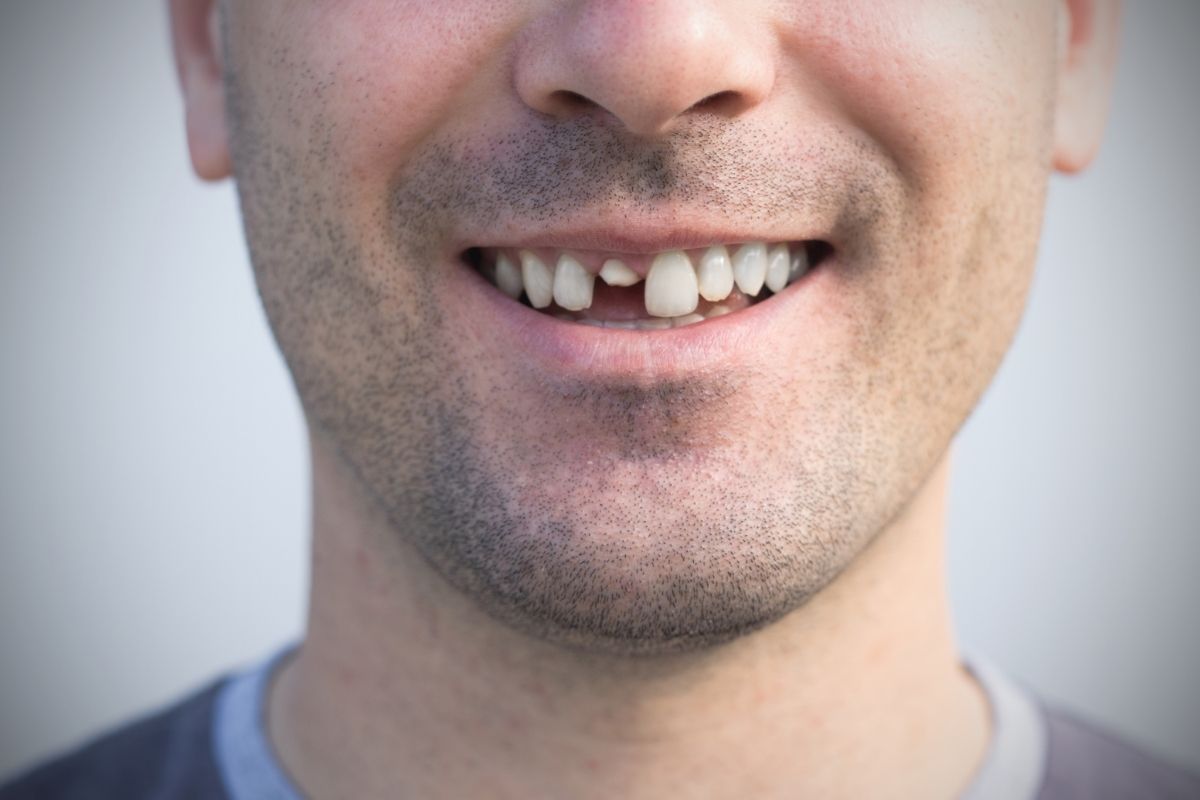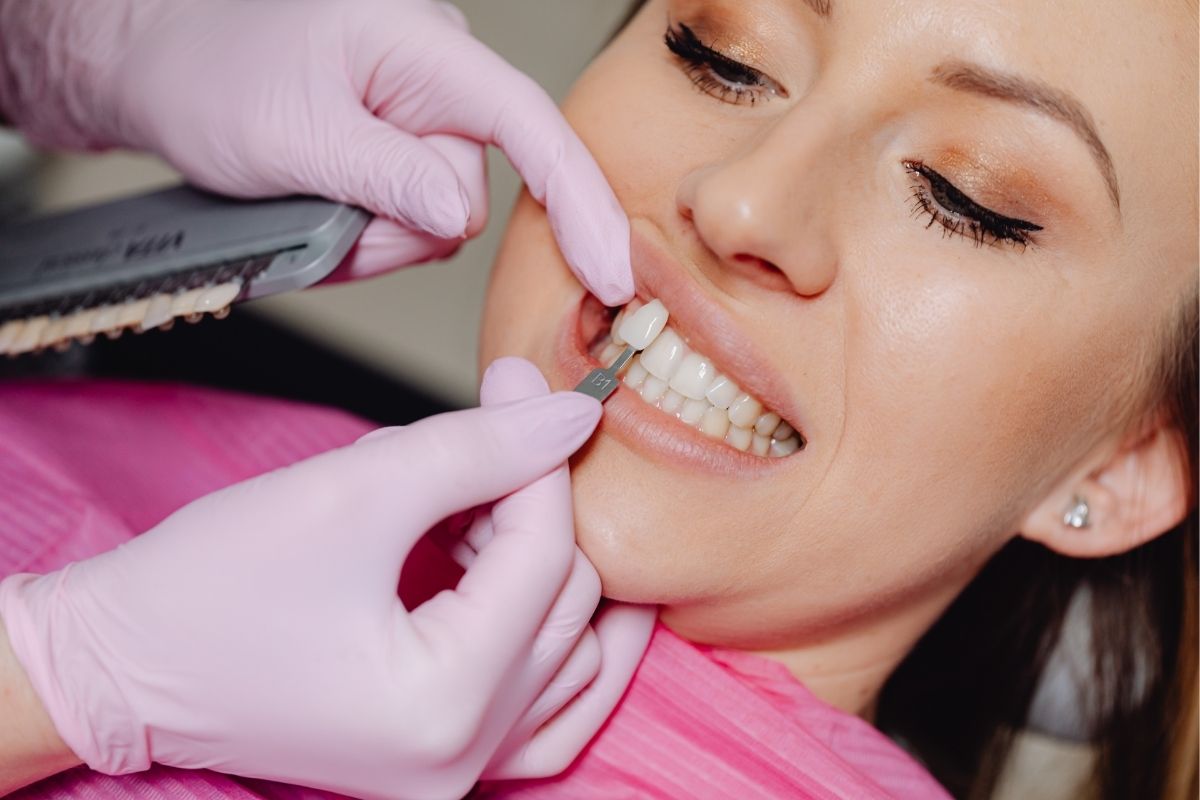A chipped front tooth can affect more than just your smile—it can make you self-conscious whenever you talk or laugh. Many of our patients come to us looking for a fast, natural-looking fix, and we often walk them through the pros and cons of veneers vs. bonding. Both options offer significant cosmetic improvements, but depending on your goals, one may be a better fit than the other. We want to help you understand the key differences to make a confident, informed decision about your dental care.
Understanding the Basics of Veneers and Bonding
Both veneers and bonding are cosmetic dental procedures that restore teeth’s appearance. However, the materials, longevity, cost, and amount of natural tooth involved differ.
What Are Dental Veneers?
Veneers are thin porcelain shells that we custom-design and bond to the front surface of your teeth. Known for their durability, stain resistance, and realistic appearance, the entire veneer installation process is often used to fix chips, discoloration, and uneven spacing effectively.
What Is Dental Bonding?
Bonding uses a tooth-colored composite resin that we shape and polish directly onto your natural tooth. This process is typically completed in a single visit and is commonly used for minor chips, cracks, or gaps.
When deciding between veneers and bonding, consider the extent of dental work needed, your budget, and how long you wish the results to last. Consulting with a cosmetic dentist can help guide your decision based on your dental needs and aesthetic goals. Ultimately, both veneers and bonding are practical solutions that can lead to a more confident and beautiful smile.
Veneers vs. Bonding: Key Differences to Know
Deciding between veneers and bonding helps compare the benefits of veneers and dental bonding across a few important categories.
Appearance and Aesthetics
- Veneers: Offer a high-gloss, natural finish that closely mimics enamel. Because they’re custom-made in a lab, they can be shaped and colored precisely.
- Bonding: It also looks natural, especially when expertly sculpted. However, it may not reflect light in the same way as porcelain and is more likely to discolor over time.
Durability and Longevity
- Veneers: Typically last 10–15 years or more with proper care. They’re more resistant to staining and wear.
- Bonding: Usually lasts 3–7 years. While durable for minor repairs, bonding is more likely to chip or wear down, especially in high-bite areas.
Cost and Time
- Veneers: Require more time and investment. They usually involve two appointments—one to prep the tooth and another to place the veneer after it’s created in the lab.
- Bonding: More affordable and completed in one visit. It’s an excellent choice for quick fixes on a budget.
Tooth Preservation
- Veneers: A small amount of enamel must be removed to make space for the veneer. This step is irreversible.
- Bonding: Minimal or no enamel removal is required, making it a more conservative option.
Choosing between veneers and bonding depends on personal priorities such as aesthetics, budget, longevity, and tooth preservation. Veneers may be the best choice for those seeking a long-lasting, highly aesthetic solution. Conversely, bonding presents an excellent alternative for patients looking for a cost-effective, quick fix with minimal alterations to their natural teeth. It’s always best to consult a dental professional to explore which option best aligns with your needs and goals.
Veneers vs. Bonding: Our Expert Recommendation
Every patient is unique, and we always base our recommendations on the specific condition of your teeth, cosmetic goals, and budget.
What We Typically Advise
Bonding is often a significant first step for small chips or cracks. However, veneers provide a more comprehensive and durable solution if you seek a more permanent and polished result or deal with multiple imperfections. We’re happy to evaluate your smile and help you decide which treatment will give you the best long-term results, leveraging the specific benefits of choosing composite bonding where appropriate.
When Should You Choose Veneers?
Veneers are an excellent option for patients who want a long-term, high-quality solution to restore front teeth. They’re especially ideal if:
- You want to fix multiple aesthetic issues at once
- Your teeth have deep discoloration that bonding can’t hide
- You’re looking for the most natural and durable finish
- You want a full smile makeover
When Is Bonding the Better Choice?
Bonding is an excellent option for minor cosmetic repairs, especially if you’re not ready to commit to veneers. It works well if:
- The chip or damage is minor
- You want an affordable, quick solution
- You prefer to preserve as much of your natural tooth as possible
- You’re considering a short- to medium-term fix
Both veneers and bonding have their place in cosmetic dentistry. By understanding their key differences, benefits, and drawbacks, you can make an informed decision that aligns with your tooth health, appearance, and lifestyle. Remember, it’s always best to consult your dentist to discuss which option suits you best for long-lasting results.
Ready to Fix That Chipped Tooth? Let Us Help You Choose the Best Cosmetic Option

Whether you’re leaning toward veneers vs. bonding, we’re here to help restore your confidence with the proper treatment. Both procedures are highly effective and can dramatically improve the look and feel of your smile. If you’re ready to repair chipped teeth and explore your options, contact Indian Trail Dental Studio today. We’re your trusted local family dentist in Indian Trail, NC, helping you achieve a healthy, beautiful smile with confidence.


